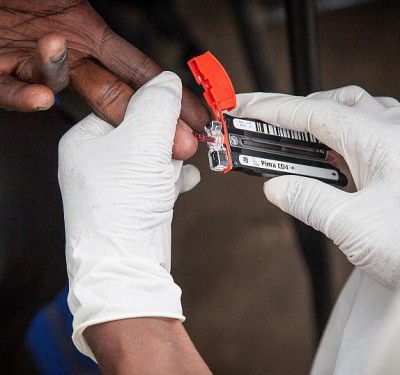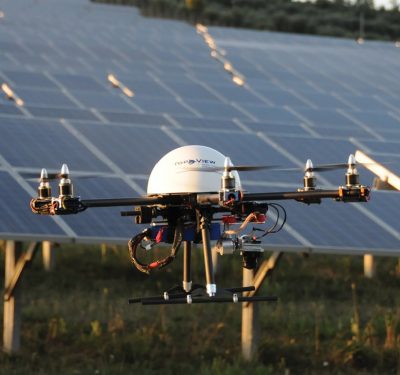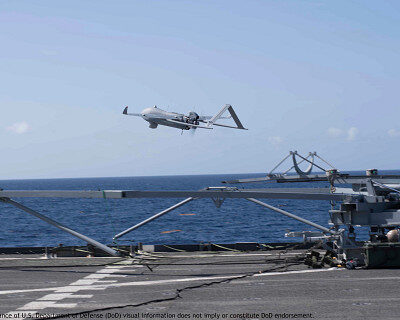Grupo Oesía is a group of multinational companies with more than 45 years of experience designing and developing technology for the Security, Defense and Aerospace sectors, and to which UAV Navigation belongs. César Martínez, Director of Products, showcased advanced GNSS-denied solutions and autonomy innovations at Xponential 2024.

At Xponential 2024 in San Diego, Inside Unmanned Systems connected with César Martínez, Director of Products of Grupo Oesía, the group of firms that includes UAV Navigation, discussing the company’s latest advancements in GNSS-denied navigation, autonomous systems, and their impact on the UAV market.
IUS: Today with us, we have César Martínez, from Grupo Oesía and representing UAV Navigation. Welcome, César.
César Martínez: Thanks. It’s a pleasure to be here.
IUS: Great. So from an Xponential perspective, how long have you guys been coming to this show?
César Martínez: Well, I think it’s our ninth or 10th occasion here. Xponential is one of the events we mark on our calendar because it’s the flagship event in the UAV sector globally. The American market is very important for us, which is why we come every year. It allows us to make new contacts that sometimes transform into business opportunities, chat and share insights with our customers, and see how our products compare to the competition.
IUS: How big is your customer base in the US compared to Europe? Are you looking to expand more in the US?
César Martínez: We have several customers in the US, although I can’t disclose details at the moment for confidential reasons. We are trying to increase our footprint here because the American market is huge. We already have important opportunities and customers here, and we want to grow that.
IUS: Excellent. Can you dive into the products and technologies you’re showcasing at the conference this year?
César Martínez: This year, we are excited to showcase improvements and new capabilities in our VECTOR autopilot family and our POLAR navigation system family. I can highlight two main novelties. First, we have our new GNSS-denied navigation kit, which enhances the inertial navigation capabilities of our flight control computers . This kit includes algorithms based on intelligent image processing that drastically reduce accumulated error during navigation estimation. Second, we have incorporated swarming and manned-unmanned teaming features into our flight control systems, allowing for collaborative maneuvers and coordination between different platforms. Additionally, our autopilot can now manage launches from mothership manned aircraft, stabilizing and controlling the drone post-launch.
IUS: What do you think are the common misperceptions in the UAV market regarding navigation systems?
César Martínez: One common misperception is underestimating the importance of navigation resilience, especially in contested areas where GNSS signals can be lost, jammed, or spoofed. Our GNSS-denied navigation kit ensures that customers can continue operating and complete their missions despite such challenges. It’s about overcoming these difficulties and maintaining operational integrity.
IUS: Could you tell us more about the practical applications of your technologies for your customers?
Cesar Martínez: Absolutely. For instance, with our GNSS-denied navigation capabilities, we provide resilience, allowing our customers to fly in contested areas without relying solely on satellite signals. The swarming and manned-unmanned teaming features offer operational flexibility and act as a force multiplier, enabling coordinated multi-UAV operations that enhance overall capabilities and introduce surprise elements in operations.
IUS: How do your products serve both commercial and defense clients?
César Martínez: While our systems can be used for both commercial and defense applications, we focus more on security and defense due to the sophisticated and advanced capabilities required in these sectors. However, we also support surveillance operations in civil environments and can provide functional capabilities to meet various market demands.
IUS: Could you speak about some of your technologies that support autonomous operations?
César Martínez: Absolutely. Autonomy is key for UAV Navigation, and all our developments aim towards fully autonomous systems. For example, artificial intelligence will play a significant role in our next developments, enhancing synergies between manned and unmanned platforms. Additionally, large-scale production is becoming critical as demand for swarming UAVs increases. Being part of Grupo Oesia allows us to leverage joint capabilities to scale production efficiently.
IUS: You mentioned AI and algorithms. How are they integrated into your platforms?
César Martínez: AI is a critical technology embedded in both our flight control and navigation systems. Our engineers are experts in AI, ensuring our systems provide the advanced capabilities our customers demand. This ongoing development keeps us at the forefront of technology.
IUS: Any forthcoming developments or other highlights you’d like to share?
César Martínez: We are working on additional GNSS-denied navigation technologies, including systems that use solar sensors or star navigation. These advancements will further enhance operational capabilities in contested environments. More details will be available in the coming months.
IUS: That sounds fascinating. Thank you so much for sharing this with us, César.






